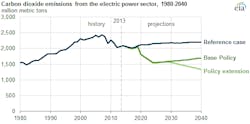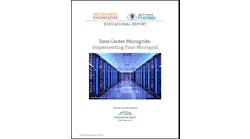Contributing writer Nick Marshall looks at the important role district energy and CHP can play as the U.S. sets new rules to cut carbon dioxide emissions, a topic that will be discussed at a major energy conference in June and in an upcoming report.
Leaders in district energy and combined heat and power will come together next month for IDEA2015 at a significant point in the history of their technologies.
The Environmental Protection Agency is poised to release its final rule for limiting carbon dioxide emissions from existing power plants. And CHP and district, highly efficient approaches to energy, offer a cost-effective pathway to compliance.
Scheduled to be finalized this summer, the Clean Power Plan looks to reduce carbon pollution from the energy sector 30 percent by 2030.
“District energy and CHP, coupled together, offer buildings an incredibly flexible and cost-effective local solution to meet onsite energy needs, while also providing considerable emissions reduction benefits,” said Anna Chittum, IDEA policy advisor and author of the soon-to-be released report, “Smart Tools in a 111(d) Toolbox: Combined Heat and Power and District Energy.”
Chittum added, “In spite of the fact that these projects were identified and put in the ground for their economic and resiliency benefits, they have also been quietly offering carbon dioxide reduction benefits for years.”
According to the report, the potential benefits from district energy and CHP mean that the Clean Power Plan represents an opportunity to “reduce rates while building a more resilient, flexible, and efficient grid.” This runs counter to criticism of the plan by opponents who say it will lead to higher priced electricity.
The reduced costs stem from the efficient use of heat in CHP systems. Power plants, the report shows, typically only use one third of their input energy for power production; the rest is discharged as excess heat. CHP captures this valuable thermal energy and puts it to good use.
As Chittum points out further in the report, CHP and district energy burn less fuel to generate the same amount of power. That means lower emissions. And while CHP is efficient on its own, its benefits are enhanced when it’s paired with district energy. District energy maximizes the efficiency of CHP by aggregating the heating, cooling, or power needs of multiple buildings.
These technologies are particularly valuable in states that use coal heavily in power production. The Energy Information Administration forecasts a more than doubling in the number of coal power plant retirements by 2040, as a result of the Clean Power Plan.
Energy efficiency technology (including district energy and CHP) is the most economical way of reducing carbon pollution, according to several recent studies. As such, both district energy and CHP may feature prominently in individual state plans to meet the proposed standards, as the energy sector adjusts to operating in ways which limit climate change impacts. Microgrids also are expected to increasingly be used to help meet the standards — grid-connected microgrids often employ CHP in the U.S.
Sponsored by the International District Energy Association (IDEA), IDEA2015 will run June 28 through July 1 in Boston.
The global gathering will feature leading experts on district energy and CHP, who will explore how communities can use the Clean Power Plan to increase efficiency, reduce rates, and make the power grid more resilient and reliable. The event also will include tours of CHP and district energy facilities in the Boston area.
IDEA2015 will be held at the John P. Hynes Convention Center in Boston. Program details and registration information are available here.
EnergyEfficiencyMarkets.com will be at IDEA2015. Subscribe to our free newsletter to follow our coverage.








